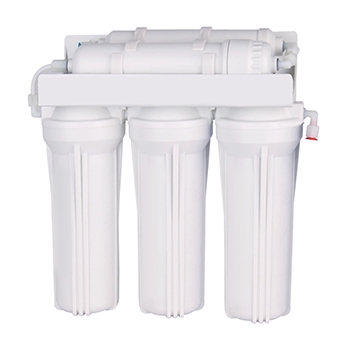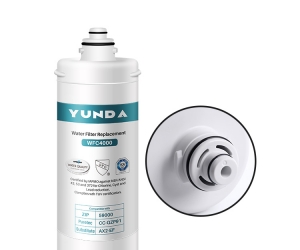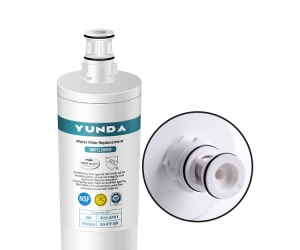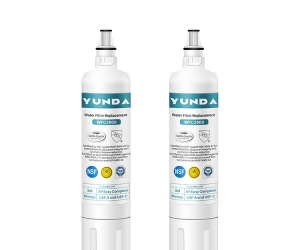Pros:
– Under-sink water filters are installed under your kitchen counter, thus, being out of sight.
– Most countertop water filters are attached to your kitchen tap via a tube, which some people find disturbing. With under-sink water filters, you can keep the clean look of your kitchen counter;
– In reverse osmosis systems, an under-sink RO system will have a better filtered water output, given that counter-top RO systems have a weaker water flow and are unable to produce very large quantities of filtered water;

Cons:
– Under-sink water filters are usually a bit larger than counter-top water filters, so even though they are not placed next to your kitchen sink as most countertop water filters, under-sink water filters still take up more space than counter-top water filters;
– Under-sink water filters are generally more expensive than countertop water filters;
– Under-sink water filters are a bit harder to install and even though you won’t necessarily need to call a plumber, you will still have to put a bit of effort into installing one.
Pros:
– Countertop water filters are smaller and, depending on the model, can take up less space than an under-sink water filter.
– Countertop water filters are easier to install and easy to move;
– Overall, countertop water filters are cheaper than under-sink water filters;
– Some countertop water filters like gravity water filters don’t have to be attached to a water supply or kitchen tap and don’t require electricity like a pumped RO system or an UV water filter would do;
Cons:
– Performance in terms of speed, water flow and water holding capacity are a problem with countertop water filters;
– Even though countertop water filters are usually smaller, the fact that they are placed next to your kitchen sink and are attached to your kitchen tap is a disadvantage compared to under-sink water filters that stay hidden in the kitchen cupboard.




